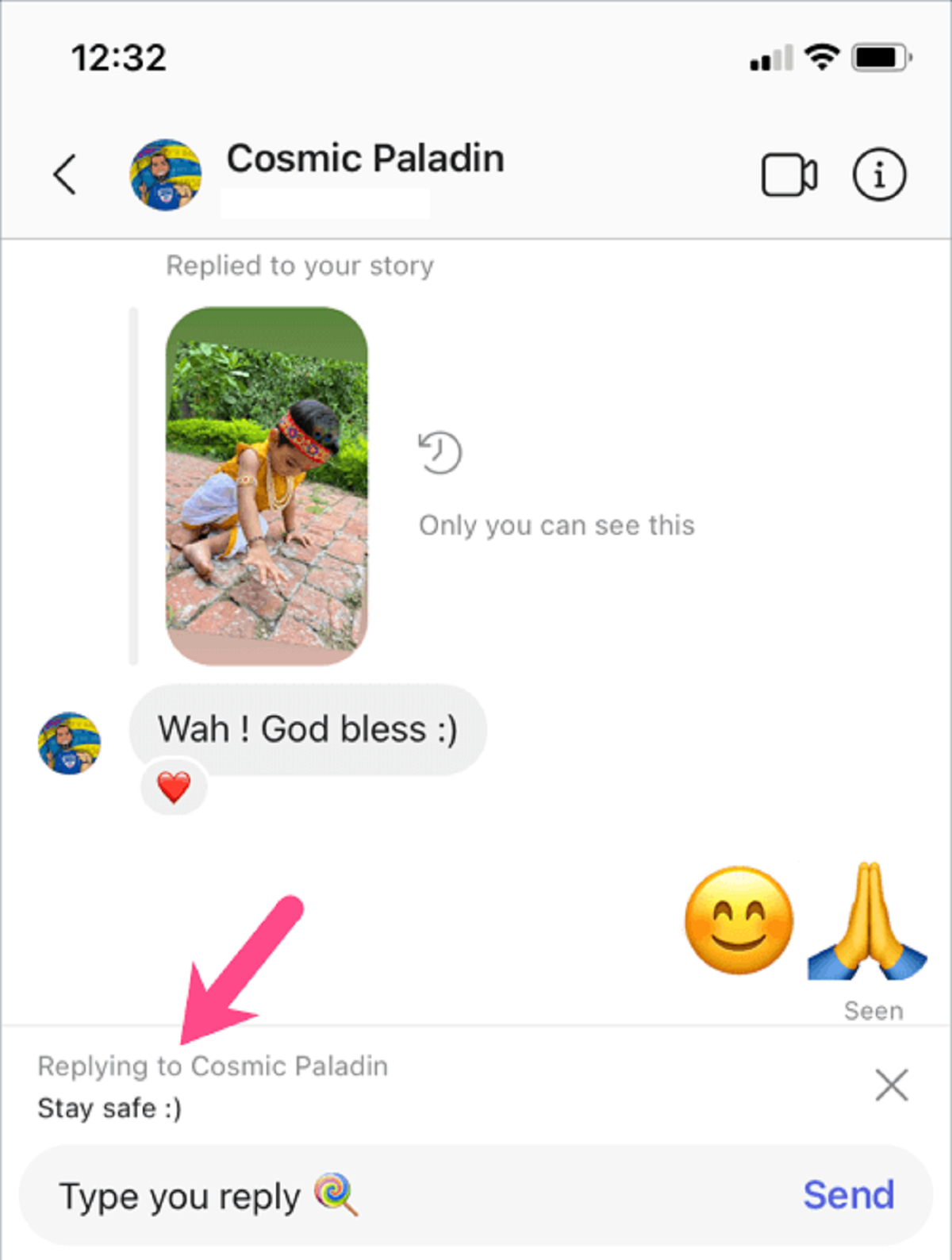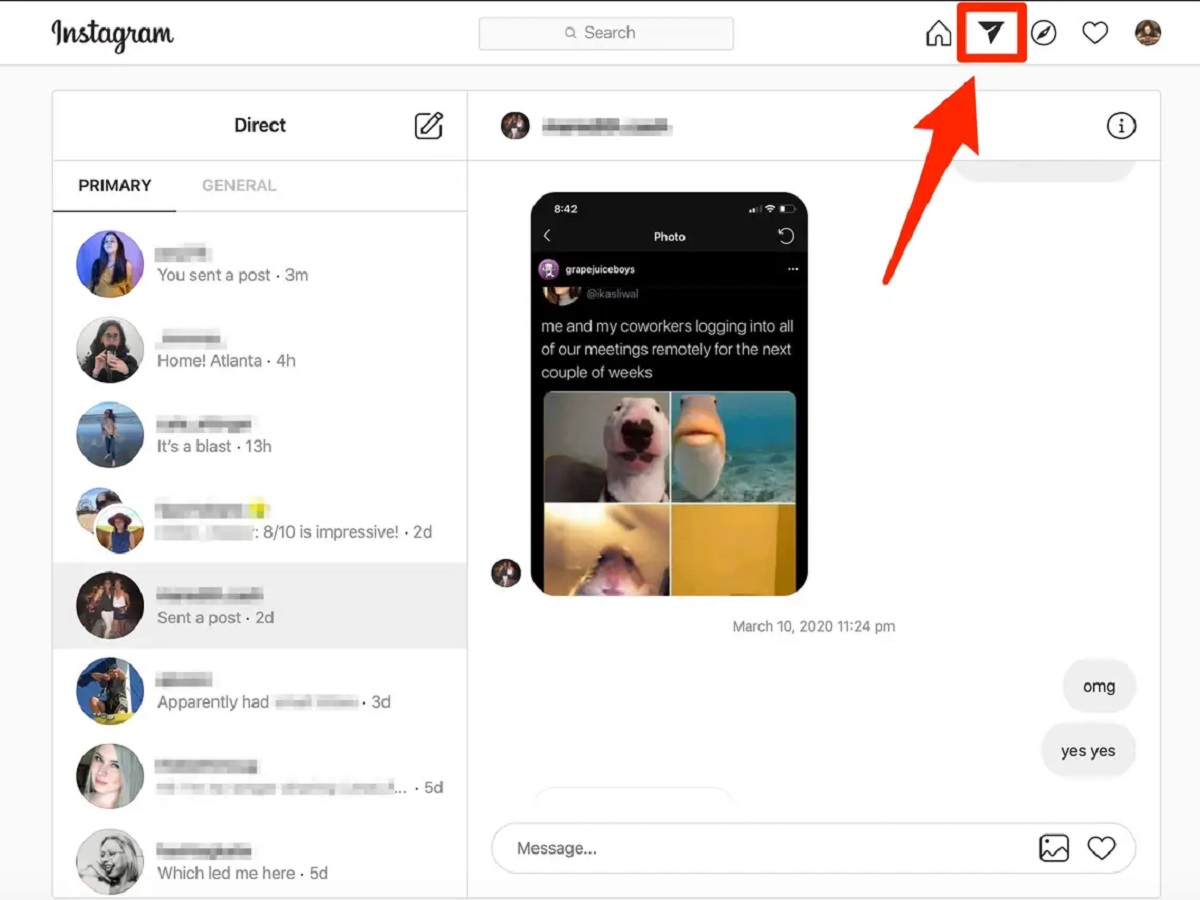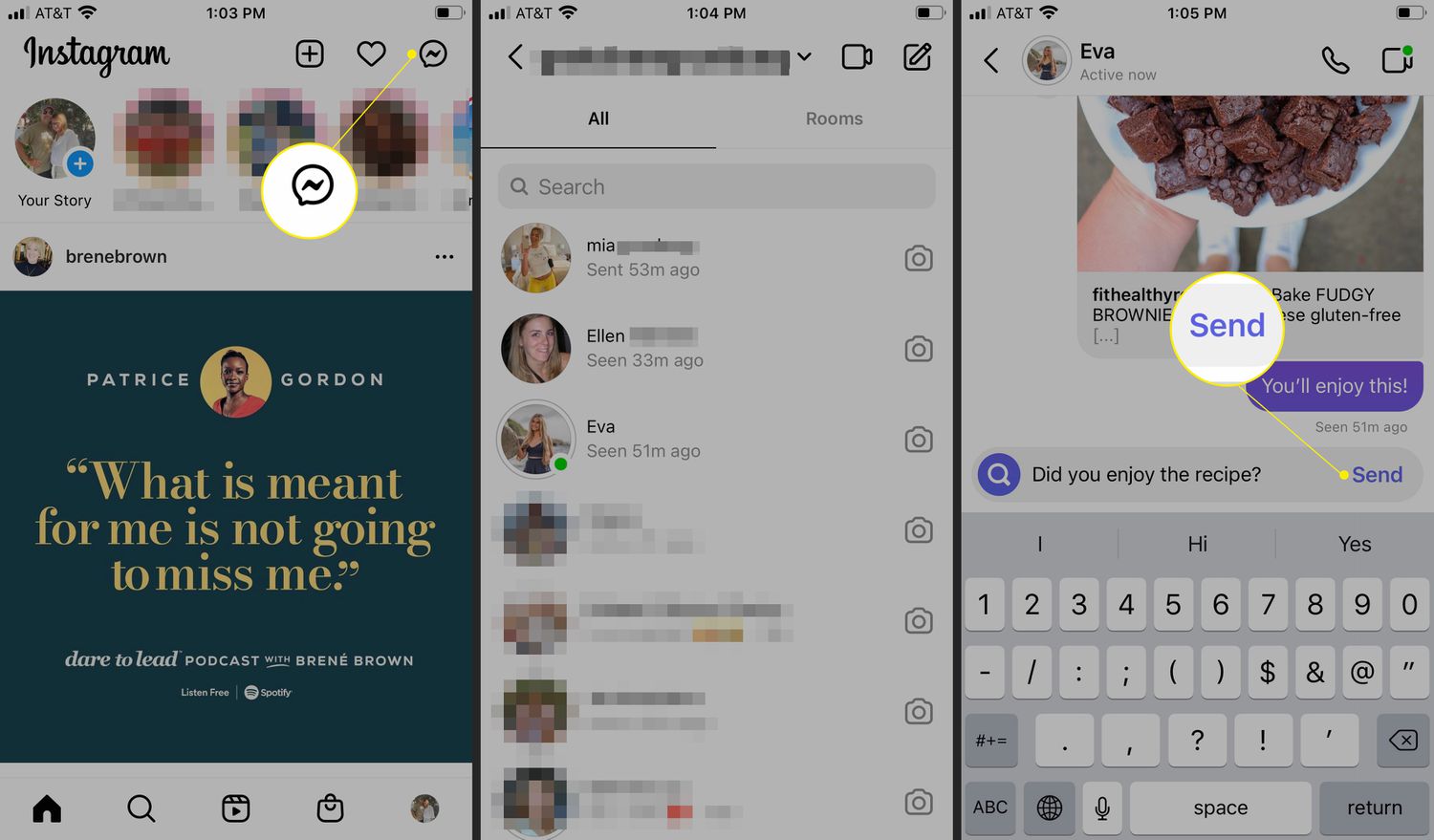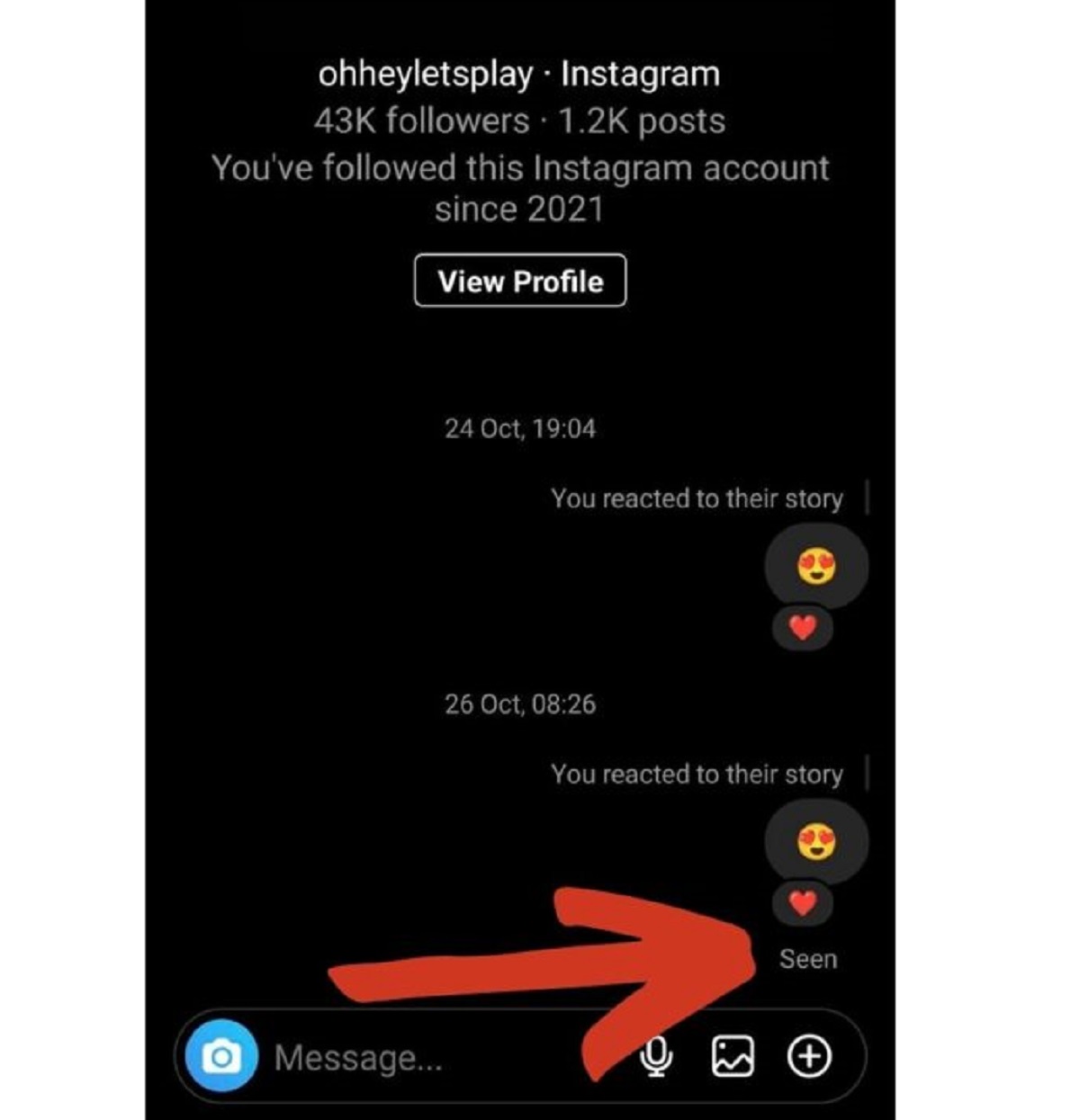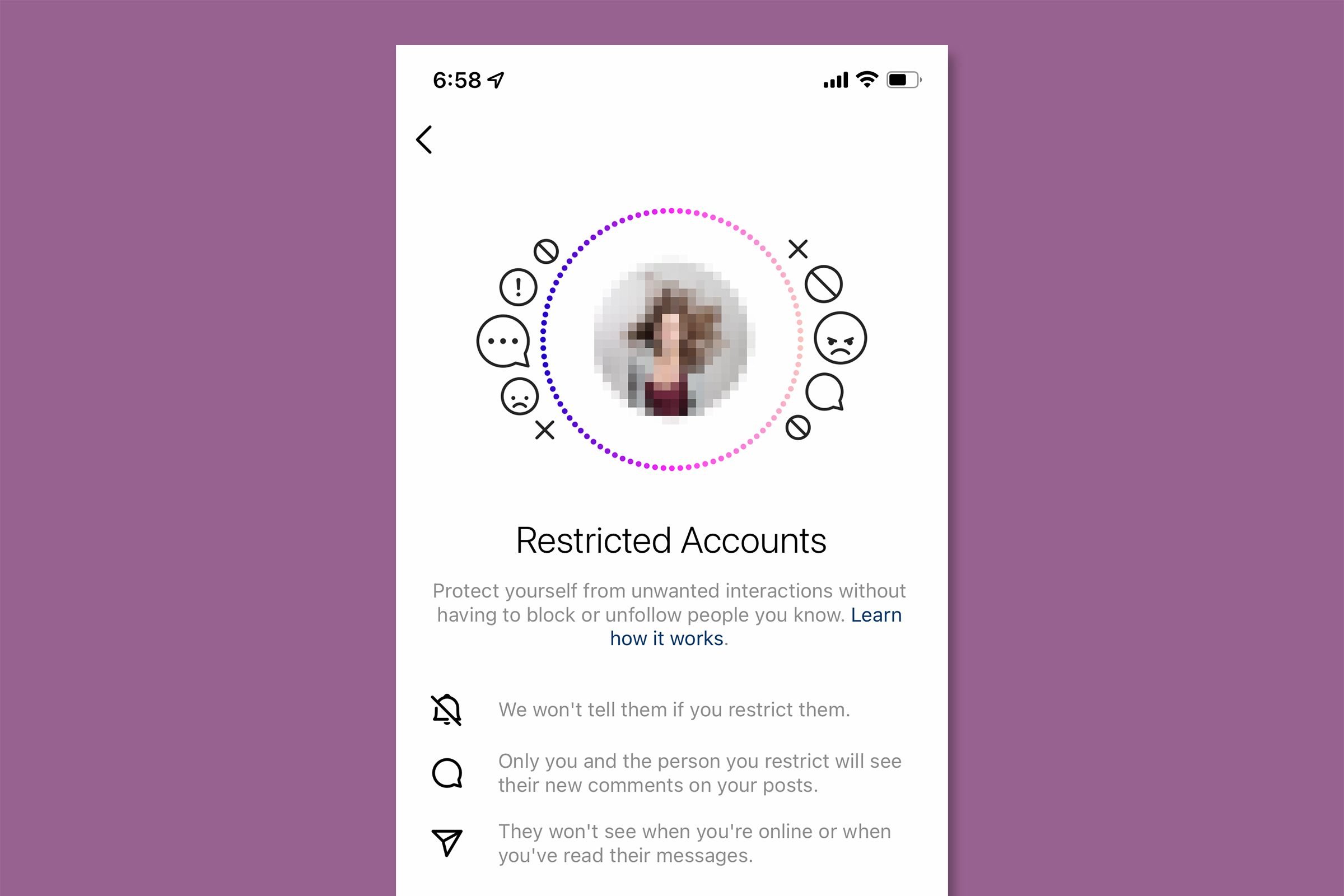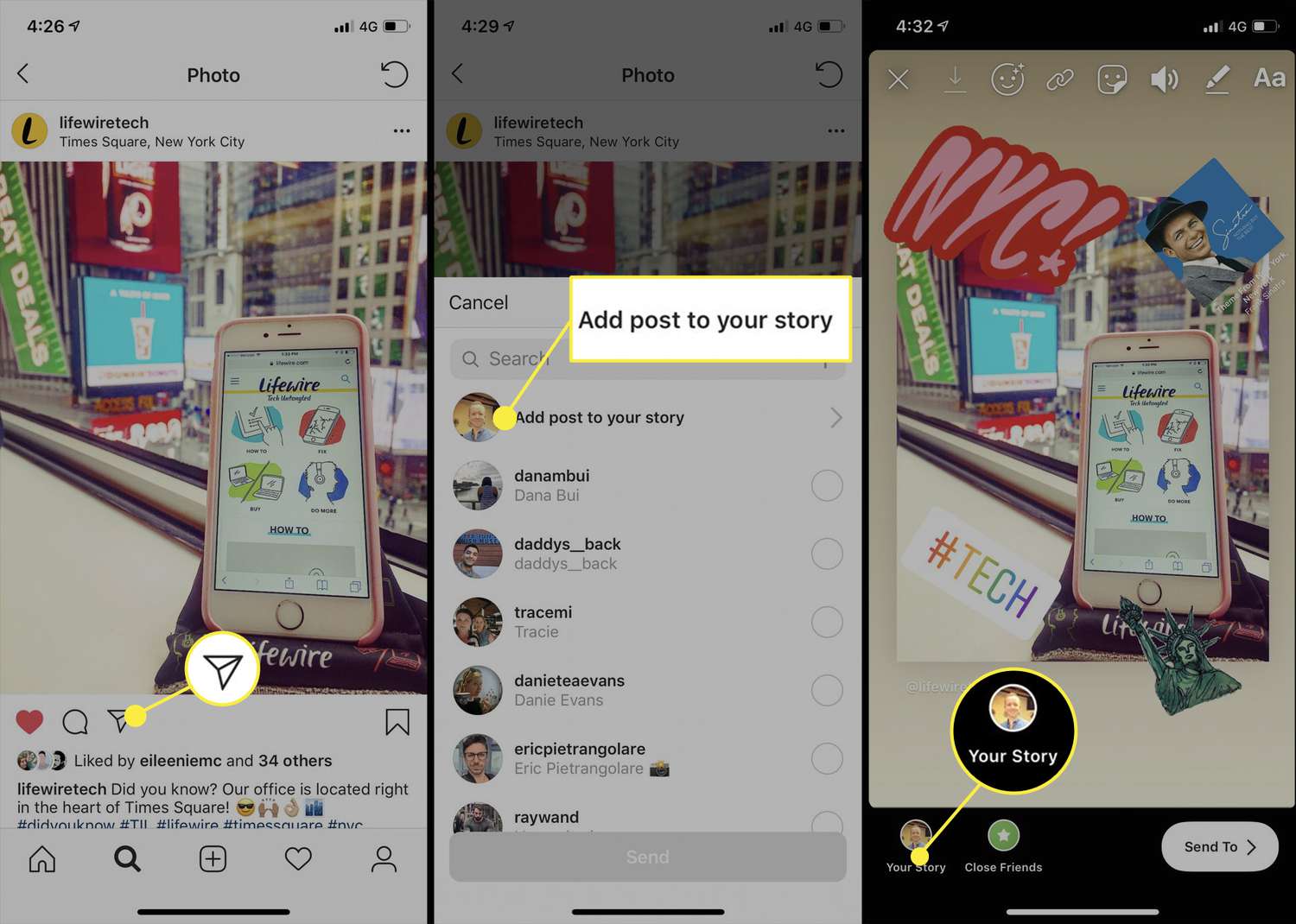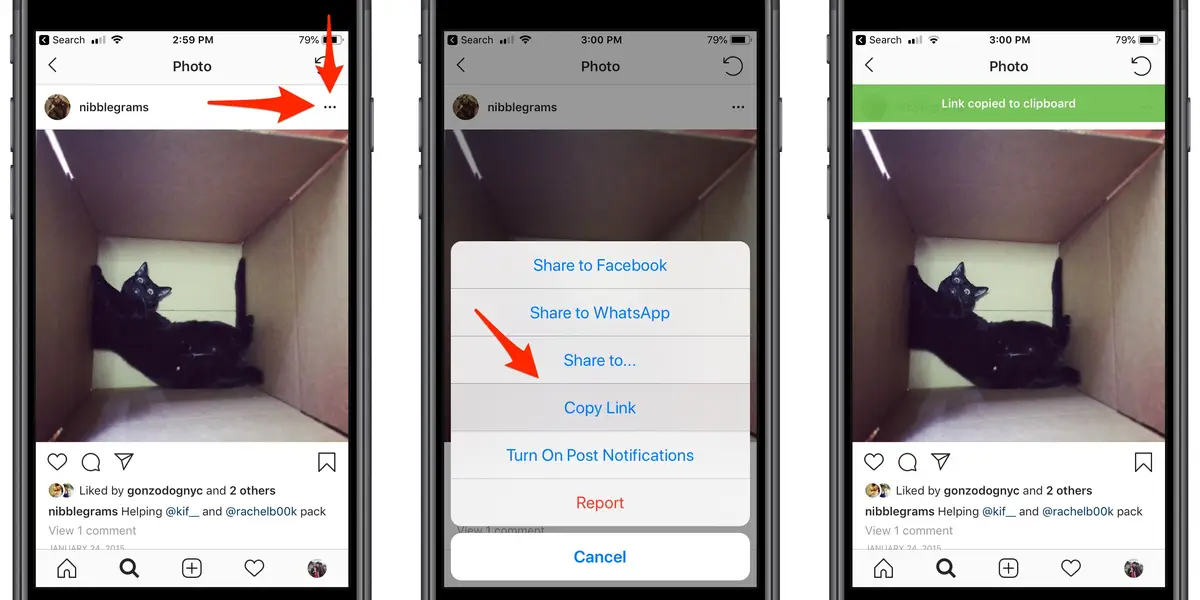Introduction
Instagram, one of the most popular social media platforms, is not only a place to share captivating photos and videos, but also a platform for communication and engagement. With the wide range of features available, including Instagram Direct Messages, connecting with friends, family, and even businesses has become easier than ever before. In this article, we will explore the art of replying to Instagram messages effectively, ensuring that your responses are engaging, informative, and help to build meaningful connections.
When someone reaches out to you on Instagram, whether it’s through a direct message or a comment on one of your posts, it’s essential to respond in a way that shows you value and appreciate the interaction. By providing thoughtful and timely replies, you not only strengthen your relationships with your followers or customers but also demonstrate your professionalism and commitment to providing excellent customer service.
However, responding to Instagram messages goes beyond simply typing out a quick reply. It involves understanding the intentions behind the message, considering the tone, and using the various features and tools available on the platform to enhance your response. In this article, we will guide you through the process of replying to Instagram messages in a way that leaves a positive impression and fosters meaningful connections.
Whether you are a business owner responding to customer inquiries or an individual engaging with your followers, understanding the dynamics of Instagram messaging and employing the right approach can make a significant difference in how your messages are received. So, let us dive into the world of Instagram replies and learn how to craft compelling responses that leave a lasting impact.
Understanding Instagram Direct Messages
Before we delve into the art of replying to Instagram messages, it is essential to understand the nature and purpose of Instagram Direct Messages. Instagram Direct Messages, also known as DMs, are a private messaging system within the Instagram platform. It allows users to communicate directly with each other, whether through text, photos, videos, or even voice messages.
DMs are a powerful tool for building relationships, whether it’s for personal or business purposes. They can be used to connect with friends, collaborate with influencers, provide customer support, or even negotiate business deals. Understanding the various aspects of Instagram DMs will help you navigate the messaging landscape more effectively and tailor your responses accordingly.
Here are a few key points to keep in mind when it comes to Instagram Direct Messages:
- Privacy: Instagram DMs are private conversations between users and are not visible to the public. This allows for more intimate and personalized interactions.
- Unsolicited Messages: Users can receive DMs from accounts they do not follow. These messages appear in the “Message Requests” folder and can be accepted or declined.
- Group Chats: Instagram allows users to create group chats, making it easier to have conversations with multiple individuals or teams at once.
- Read Receipts: When someone opens and reads a DM, a small “Seen” notification will appear next to the message, indicating that the recipient has viewed it.
- Message Filtering: Instagram employs algorithms to filter out potentially harmful or irrelevant messages, keeping users safe from spam and unwanted content.
By understanding these features and nuances of Instagram DMs, you can ensure that your replies are appropriate, respectful, and aligned with the platform’s functionality. Let’s now move on to the practical aspects of replying to Instagram messages and explore effective strategies to craft engaging responses.
How to Reply to an Instagram Message
When it comes to replying to an Instagram message, it’s important to approach it with thoughtfulness and care. Here are some essential steps to follow for effectively responding to an Instagram message:
- Read and understand the message: Before crafting a reply, take the time to thoroughly read and understand the message. Pay attention to the sender’s tone, intentions, and any specific questions or requests they may have.
- Be prompt: While it’s not always possible to respond immediately, try to reply in a timely manner. This conveys to the sender that you value their message and are eager to address their concerns.
- Show appreciation: Begin your reply by expressing gratitude for the message. This simple gesture helps to build rapport and shows that you value the sender’s engagement.
- Address the sender by name: Whenever possible, personalize your response by addressing the sender by name. This small touch adds a personal element to your reply and creates a more meaningful connection.
- Answer questions or provide information: If the message contains specific inquiries or requests, make sure to address them thoroughly and provide the necessary information. Be clear, concise, and avoid ambiguity.
- Offer assistance: Even if the message doesn’t explicitly ask for help, it’s always a good practice to offer assistance if applicable. This can be as simple as asking if there’s anything else you can do or providing resources that could be helpful.
- Show empathy: If the message conveys a problem, concern, or complaint, respond with empathy. Acknowledge their feelings and assure them that you understand their perspective.
- End on a positive note: Close your reply with a positive and encouraging statement. This leaves a good impression and helps to maintain a friendly and helpful tone throughout the conversation.
Remember, each message is an opportunity to build a connection and leave a lasting impression. By following these steps, you can ensure that your replies are thoughtful, engaging, and tailored to the sender’s needs. Let’s now explore different types of replies that you can employ in various situations.
Types of Replies to Use
When crafting your replies to Instagram messages, it’s important to consider the different types of responses you can employ. Each type has its purpose and can be used strategically depending on the context of the message. Here are some common types of replies you can use:
- Informative Replies: These replies are straightforward and provide the information requested in the message. Whether it’s answering a question, sharing details about a product or service, or giving instructions, informative replies aim to provide clarity and fulfill the sender’s needs.
- Grateful Replies: Grateful replies express appreciation for the sender’s message. You can thank them for their kind words, positive feedback, or engagement with your content. These replies not only show gratitude but also help foster a positive relationship with your followers or customers.
- Apologetic Replies: If the message indicates a complaint or dissatisfaction, apologetic replies are necessary. Acknowledge the issue, apologize for any inconvenience caused, and assure the sender that you are taking steps to resolve the problem. The aim is to show empathy and demonstrate your commitment to customer satisfaction.
- Engaging Replies: Engaging replies aim to encourage further conversation or interaction. They can involve asking follow-up questions, inviting the sender to share their thoughts or experiences, or initiating a dialogue on a particular topic. Engaging replies help to build strong connections with your audience and foster a sense of community.
- Helpful Replies: Sometimes, messages may seek guidance or assistance. In such cases, helpful replies provide support, advice, or resources that can assist the sender. You can offer solutions, share relevant information, or direct them to appropriate channels or support teams.
- Appreciative Replies: Appreciative replies express gratitude for collaborations, partnerships, or opportunities presented through Instagram messages. They show that you value the relationship and are enthusiastic about the potential for future collaboration. Appreciative replies help to maintain and strengthen business connections.
By using these types of replies strategically, you can tailor your responses to the specific context and create a positive and engaging conversation. However, keep in mind that each message is unique and may require a combination of these reply types. Adapting your response based on the sender’s needs and the message’s tone is crucial for effective communication. Next, we will explore some tips to help you craft an impactful reply.
Tips for an Effective Reply
Crafting an effective reply to an Instagram message goes beyond simply responding to the content of the message. It involves considering various factors that contribute to a meaningful and impactful conversation. Here are some tips to help you create a compelling and effective reply:
- Personalize your response: Tailor your reply to the specific message and sender. Using their name, referencing their previous interactions, or adding a personal touch can make your response feel more genuine and appreciated.
- Keep it concise: While it’s important to provide enough information, avoid overwhelming the sender with long-winded replies. Be concise and to the point, ensuring that your message is easy to read and understand.
- Use a friendly and conversational tone: Adopt a friendly and warm tone in your replies to create a welcoming atmosphere. Show that you are approachable and encourage further conversation.
- Proofread your message: Before sending your reply, take a moment to proofread it for any grammar or spelling errors. A well-written and error-free response enhances your professionalism and credibility.
- Insert relevant emojis: Emojis can add a hint of personality and emotion to your replies. Use them sparingly and appropriately to complement your message, but avoid overusing or misusing them.
- Provide additional resources or links: If your reply requires more information or if you have resources available, consider including relevant links or documents. This can help the sender find additional details or access necessary resources easily.
- Follow up if needed: In some cases, it may be necessary to follow up with the sender, especially if their inquiry or concern requires further attention or resolution. Make a note to check back or provide updates as necessary.
- Show genuine interest: Demonstrate genuine interest and care in your replies. Take the time to understand the context and ask follow-up questions to show that you are actively engaged in the conversation.
- Maintain professionalism: Regardless of the nature of the message, always maintain a professional demeanor. Avoid using slang, offensive language, or engaging in heated or disrespectful exchanges.
By implementing these tips, you can create replies that are engaging, informative, and foster a positive connection with the sender. Remember that effective communication is a crucial element of building relationships and making a lasting impression. Now, let’s explore how to handle replying to multiple messages efficiently.
Responding to Multiple Messages
As your Instagram following grows, you may find yourself receiving multiple messages from different individuals. Responding to each message individually can be time-consuming and overwhelming. Here are some tips to help you handle and respond to multiple messages efficiently:
- Categorize and prioritize: Start by categorizing the messages based on their purpose or content. This could include customer inquiries, collaboration requests, feedback, or general comments. Prioritize responding to messages that require immediate attention or have a higher level of importance.
- Batch your responses: Instead of replying to each message as it comes in, consider batching your responses. Set aside dedicated time during the day to respond to messages in groups. This helps you maintain focus and respond more efficiently.
- Use templated responses: For frequently asked questions or common inquiries, consider creating templated responses. This allows you to provide consistent information without having to type out the same response repeatedly. However, make sure to personalize the response as needed.
- Be transparent about response times: If you anticipate delays in responding to messages, it’s important to set expectations. Update your Instagram bio or use story highlights to inform followers about response times. This helps manage their expectations and avoids any frustration.
- Delegate if possible: If you have a team or assistance available, delegate the task of responding to messages. Ensure that the person handling the responses understands your brand voice and guidelines to maintain consistency in communication.
- Use Instagram’s Quick Replies: Instagram provides a feature called Quick Replies that allows you to create shortcut responses. You can set up predefined replies to common questions or inquiries, making it faster and easier to respond to multiple messages.
- Set up automated responses: Depending on the nature of the messages you receive, you may consider using automation tools to set up automated responses. However, use this option cautiously as it may not always provide the personalized touch that genuine human responses do.
By implementing these strategies, you can streamline your process of responding to multiple messages, ensuring that you provide timely and effective replies to all your engagements. Next, we will discuss how to handle difficult or challenging messages.
Handling Difficult Messages
While most of the messages you receive on Instagram may be positive or neutral, there may be instances where you encounter difficult or challenging messages. It’s important to approach these situations with empathy, professionalism, and a level-headed mindset. Here are some tips for handling difficult messages:
- Stay calm and composed: When faced with a difficult message, it’s crucial to remain calm and composed. Take a moment to gather your thoughts and emotions before responding. Avoid responding defensively or with anger, as this can escalate the situation further.
- Listen and understand: Before formulating a response, take the time to truly listen and understand the sender’s concerns. Put yourself in their shoes and try to empathize with their perspective. This demonstrates that you value their feedback and are willing to address their concerns.
- Show empathy and apologize if necessary: If the message indicates dissatisfaction or a negative experience, respond with empathy and sincerity. Apologize for any inconvenience caused and acknowledge their feelings. This can help diffuse tension and show that you are committed to resolving the issue.
- Address the concern directly: Respond to the main issue or concern raised in the message. Provide a clear and concise explanation or solution, if possible. Avoid getting defensive or making excuses, as this can further escalate the situation.
- Offer a resolution: If appropriate, offer a resolution to the problem. This could involve providing a refund, exchanging a product, or offering a discount for future purchases. Aim to leave the sender feeling satisfied and valued despite the initial difficulty.
- Take the conversation offline if necessary: In some cases, it may be best to take the conversation offline. Provide contact information or suggest moving the discussion to email or phone to address the issue privately and in a more personal manner.
- Document the interaction: If the difficult message relates to a larger issue or complaint, it’s essential to document the interaction. This helps keep track of the conversation and ensures that any necessary follow-up actions are taken.
- Seek support if needed: If you encounter an extremely difficult or abusive message, it’s important to prioritize your well-being. Seek support from a colleague, mentor, or supervisor who can provide guidance in handling such situations.
Remember, handling difficult messages requires patience, empathy, and professionalism. By responding thoughtfully and addressing the sender’s concerns with care, you can turn a challenging situation into an opportunity to showcase your commitment to customer service. Now, let’s explore how to make use of Instagram’s features to enhance your replies.
Using Instagram’s Features to Enhance Replies
Instagram offers a variety of features that can help enhance your replies and make them more engaging and visually appealing. By leveraging these features, you can create more impactful and interactive conversations with your followers. Here are some ways to use Instagram’s features to enhance your replies:
- Emojis and stickers: Incorporate emojis and stickers into your replies to add a touch of personality and emotion. They can help convey your tone and make your responses more relatable.
- Instagram Stories: Utilize Instagram Stories to amplify your replies. You can share screenshots of the message you’re replying to, tag the sender, and provide more context or details in a visually appealing manner.
- Video replies: Instead of sending a written response, consider sending a video reply. This adds a personalized touch and allows for a more dynamic and engaging interaction.
- Instagram Live or IGTV: For more complex queries or requests, you can use Instagram Live or IGTV to engage with your audience in real-time or provide a detailed response through a longer video format.
- Direct voice messages: Instead of typing out a reply, you can send a direct voice message as a response. This can make your reply feel more genuine and human, adding a personal touch to the conversation.
- Tagging and mentions: When replying to a message, consider tagging or mentioning the sender’s Instagram handle. This ensures that they receive a notification and increases the likelihood of their engagement with your response.
- Use hashtags or location tags: Including relevant hashtags or using location tags in your replies can help expand the reach of your response. This encourages more people to discover your content and engage in the conversation.
- Link to relevant content or resources: If your reply requires providing additional information, resources, or relevant content, include the appropriate links in your response. This makes it easier for the sender to access the information and enriches their experience.
- Utilize Instagram’s Caption Translator: If you have international followers or receive messages in different languages, you can use Instagram’s Caption Translator feature to translate your replies into the sender’s language, facilitating better communication and understanding.
By leveraging these features, you can add depth, creativity, and excitement to your replies, making them more memorable and engaging for your audience. Adapt your use of features based on the message and context to create a more personalized and meaningful response. Finally, let’s discuss some common pitfalls to avoid in your replies.
Avoiding Common Pitfalls in Replies
When replying to Instagram messages, it’s crucial to be mindful of certain pitfalls that can negatively impact the effectiveness of your responses. By being aware of these pitfalls, you can avoid common mistakes and ensure your replies are well-received. Here are some common pitfalls to avoid in your replies:
- Ignoring or delaying responses: Failing to respond to messages in a timely manner or ignoring them altogether can create a negative impression. Make it a priority to respond to all messages promptly, even if it’s to acknowledge that you will provide a more detailed response later.
- Being impersonal: Generic, copy-and-paste responses can make your replies feel impersonal and insincere. Take the time to personalize your responses, addressing the sender by name and considering their specific context or inquiries.
- Using automated responses excessively: While automation can be helpful for efficiency, overusing automated responses can make your replies feel robotic and detached. Balance automation with genuine, human interaction to maintain a personal connection.
- Forgetting to proofread: Sending replies filled with spelling or grammatical errors can harm your professionalism and credibility. Double-check your responses before sending them to ensure they are error-free and coherent.
- Responding defensively: When faced with criticism or complaints, it’s natural to feel defensive. However, responding with a defensive tone can worsen the situation. Approach difficult messages with empathy and address concerns calmly and constructively.
- Being overly casual or unprofessional: While it’s important to maintain a friendly tone, be mindful of crossing the line into overly casual or unprofessional language. Maintain an appropriate level of professionalism to preserve your brand image.
- Not fully understanding the message: Quickly firing off a response without fully comprehending the sender’s message can lead to misunderstandings and miscommunication. Take the time to read and understand the message thoroughly before crafting your reply.
- Disregarding negative feedback: Negative feedback can be an opportunity for growth and improvement. Avoid dismissing or disregarding negative feedback. Instead, embrace it as a learning opportunity and respond constructively to address the concerns raised.
- Engaging in public arguments or conflicts: It’s important to handle disagreements or conflicts privately rather than engaging in public arguments. Move the conversation offline or to direct messaging to maintain professionalism and avoid damaging your online reputation.
By avoiding these common pitfalls, you can ensure that your replies are well-crafted, professional, and contribute to positive interactions with your followers or customers. Now, let’s explore some examples of great replies to provide inspiration for your own messaging.
Examples of Great Replies
To illustrate effective communication on Instagram, let’s take a look at some examples of great replies that showcase different scenarios and approaches:
Example 1: Informative Reply
Sender: “Hi! I love your recent recipe post. Can you please share the full recipe and cooking instructions?”
Reply: “Thank you for your kind words! I’m glad you enjoyed the recipe. Sure, here’s the full recipe and step-by-step cooking instructions: [Insert detailed recipe]. Let me know if you have any other questions or need further assistance.”
Example 2: Grateful Reply
Sender: “Your photography skills are amazing! Your pictures always inspire me. Keep up the great work!”
Reply: “Thank you so much for your kind words and support! It means a lot to me. I’m glad my photos inspire you. I’ll continue to share more captivating moments. Stay tuned for more content!”
Example 3: Apologetic Reply
Sender: “I received my order, but one of the items is damaged. Can you please assist?”
Reply: “I’m so sorry to hear that one of the items arrived damaged. We apologize for the inconvenience caused. Please send us a direct message with your order details, and we’ll work on resolving the issue as quickly as possible. Thank you for bringing this to our attention.”
Example 4: Engaging Reply
Sender: “I loved your recent travel post! Have you ever been to [destination]? I’m planning a trip there and would love some recommendations.”
Reply: “Thank you for your support! I’m glad you enjoyed the post. Yes, I’ve been to [destination]. It’s a beautiful place! I’d be happy to share some recommendations with you. Could you please send me a direct message so we can discuss it in more detail? Looking forward to helping you plan your trip!”
Example 5: Helpful Reply
Sender: “I’m struggling with getting started on my fitness journey. Any advice on how to stay motivated?”
Reply: “I totally understand the challenges of starting a fitness journey. Here are a few tips to help you stay motivated: [Provide 2-3 practical tips]. Remember, progress takes time, so be patient with yourself. Feel free to reach out if you have any specific questions or need further support. You’ve got this!”
These examples demonstrate the importance of tailoring your responses to the specific messages and engaging with your audience in a genuine and meaningful way. By applying these principles to your own replies, you can create connections, provide assistance, and leave a positive impression on your followers or customers.
Now that we’ve explored the examples, feel free to implement these strategies and adapt them to your own brand and communication style. Good luck with your Instagram message replies!
Conclusion
Crafting effective replies to Instagram messages is a crucial aspect of building and maintaining strong relationships with your followers or customers. By understanding the nuances of Instagram Direct Messages, employing the right strategies, and leveraging the platform’s features, you can create engaging and impactful conversations. Remember to personalize your responses, address inquiries promptly, and maintain a friendly and professional tone throughout.
Whether you are providing informative replies, expressing gratitude, offering resolutions to challenges, or engaging in meaningful discussions, each message is an opportunity to leave a lasting impression. By avoiding common pitfalls like delayed responses, impersonal replies, or defensive attitudes, you can ensure that your communication is effective and fosters positive connections.
Utilize Instagram’s features such as emojis, Instagram Stories, and video replies to enhance your responses and make them more engaging. Additionally, stay open to feedback, handle difficult messages with empathy and professionalism, and continually optimize your messaging approach based on the unique needs and characteristics of your audience.
By implementing the tips, techniques, and examples provided in this article, you can master the art of replying to Instagram messages and strengthen your online presence, whether for personal interactions or professional engagements. So, go ahead and start crafting thoughtful and impactful replies that help you build meaningful connections through Instagram Direct Messages.







